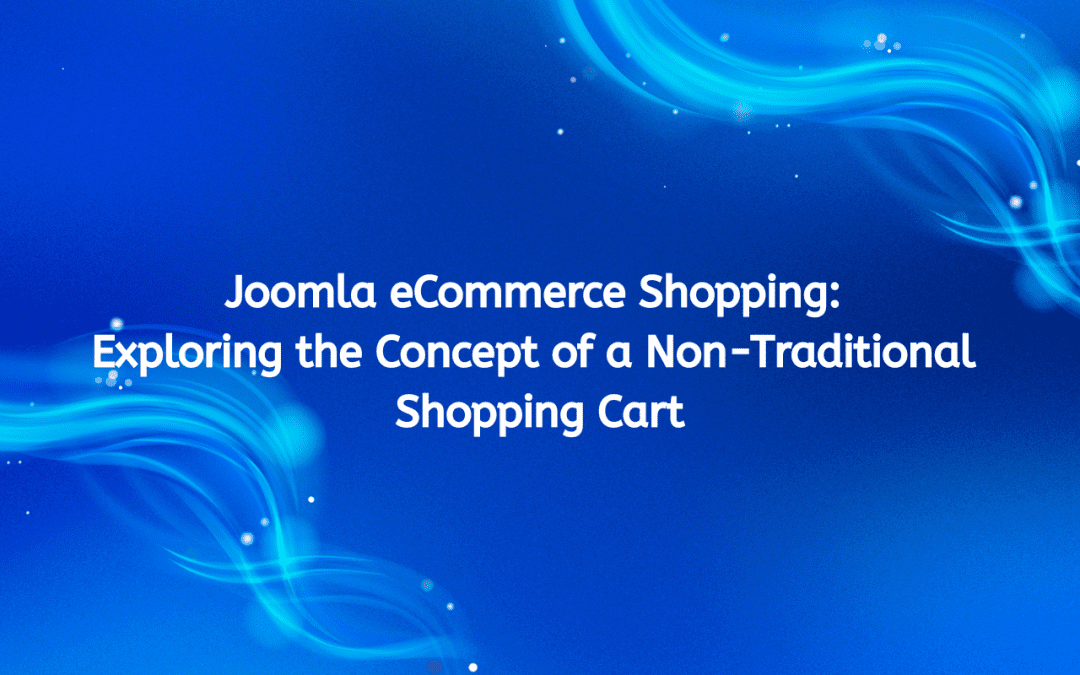In the realm of eCommerce, the shopping cart is a pivotal feature, often viewed as a mandatory component for any online store. However, with the rise of innovative technologies and changing consumer behaviors, the concept of a traditional shopping cart is being challenged. This article delves into the Joomla eCommerce environment, examining how the idea of a “non-real” shopping cart can redefine the online shopping experience.
Understanding Joomla as an eCommerce Platform

Joomla is a powerful content management system (CMS) that offers flexibility and scalability, making it an ideal choice for eCommerce projects. With its extensive range of extensions and templates, Joomla allows developers and business owners to create tailored online stores that meet specific needs. Among its many extensions, Joomla’s eCommerce solutions, such as VirtueMart and HikaShop, provide robust frameworks for managing products, orders, and customers.
The Role of the Shopping Cart in eCommerce
Traditionally, a shopping cart facilitates the process of selecting products, managing quantities, and proceeding to checkout. It serves as a virtual space where customers can review their selections before finalizing their purchases. However, the conventional shopping cart model has several limitations:
- Complexity: Navigating through multiple cart pages can be cumbersome for users.
- Abandonment Rates: High cart abandonment rates plague online stores, often due to a complicated checkout process.
- User Experience: A traditional cart may not align with modern shopping behaviors, such as impulse purchases or mobile browsing.
The Concept of a Non-Traditional Shopping Cart

The idea of a non-traditional or “non-real” shopping cart seeks to address these limitations by reimagining how users interact with products and the checkout process. This approach can take various forms, including:
1. Instant Checkout Options
One of the most straightforward alternatives to a traditional cart is the instant checkout feature. This allows users to purchase a product immediately after clicking on it, bypassing the cart altogether. For example, a Joomla store could implement a “Buy Now” button that directs users straight to a payment gateway, streamlining their shopping experience.
2. Wishlist Functionality
Instead of a traditional cart, users can leverage a wishlist feature. This allows customers to save products for later consideration without the pressure of immediate purchase. In Joomla, extensions can be configured to enable users to manage their wishlists easily, fostering a more relaxed shopping environment.
3. One-Page Checkout
For those who still prefer a cart but want to minimize complexity, a one-page checkout can significantly enhance the user experience. This approach consolidates all necessary information—shipping details, payment methods, and order summary—onto a single page. Joomla eCommerce solutions can be customized to implement this streamlined process, reducing abandonment rates.
4. Social Commerce Integration
The rise of social media has transformed how individuals shop online. Integrating social commerce functionalities allows users to share products with friends or purchase directly through social platforms. Joomla can be extended with social media plugins that facilitate sharing, recommendations, and even direct purchases, creating a community-driven shopping experience.
5. Progressive Web Apps (PWAs)
With the advent of mobile technology, PWAs have gained traction as a way to deliver app-like experiences on the web. By utilizing Joomla’s capabilities, developers can create a PWA that provides fast loading times, offline capabilities, and a seamless shopping experience without relying on a traditional cart.
Advantages of Non-Traditional Shopping Carts

Embracing a non-traditional approach to eCommerce shopping can offer several benefits:
Enhanced User Experience
By simplifying the purchasing process, businesses can create a more enjoyable shopping experience. This can lead to increased customer satisfaction and loyalty.
Reduced Cart Abandonment
Streamlining the checkout process can significantly lower cart abandonment rates. When users face fewer obstacles, they are more likely to complete their purchases.
Increased Sales
With features like instant checkout and social sharing, businesses can capitalize on impulse buying, potentially increasing overall sales.
Flexibility and Customization
Joomla’s extensibility allows store owners to adapt their eCommerce solutions to fit their specific needs, providing a competitive edge in a crowded market.
Challenges and Considerations
While the non-traditional shopping cart model presents numerous advantages, it is not without challenges. Businesses must consider the following:
Integration with Existing Systems
Transitioning from a traditional cart to a non-traditional model may require significant changes to existing systems, including payment gateways and inventory management.
User Education
Customers accustomed to traditional shopping carts may need guidance on new processes. Clear communication and user-friendly design are essential to ensure a smooth transition.
Security Concerns
As with any eCommerce solution, security is paramount. Implementing new checkout processes must be done with security in mind to protect sensitive customer information.
Implementing Non-Traditional Carts in Joomla
To implement a non-traditional shopping cart in a Joomla eCommerce store, consider the following steps:
- Select the Right Extensions: Explore Joomla’s marketplace for extensions that support instant checkout, wishlist functionalities, and social commerce integration.
- Customize User Experience: Work with developers to customize the user interface, ensuring it is intuitive and aligns with modern shopping behaviors.
- Test the Changes: Before launching, conduct thorough testing to identify any potential issues that could affect user experience or security.
- Educate Your Customers: Provide resources, such as FAQs and tutorials, to help customers navigate the new system easily.
- Monitor and Optimize: After implementation, continuously monitor user behavior and feedback to refine the shopping experience further.
So, Joomla eCommerce shopping not real cart, what’s issue?
The landscape of eCommerce is continuously evolving, and the traditional shopping cart is no longer the only option for online businesses. Joomla provides a flexible platform that allows store owners to explore innovative approaches to the shopping experience, moving beyond the confines of a conventional cart. By embracing non-traditional shopping methods, businesses can enhance user satisfaction, reduce cart abandonment, and ultimately drive sales growth. As technology continues to advance, those willing to adapt and innovate will find themselves at the forefront of the eCommerce revolution.

Hello everyone! We’re Galussothemes content team, we love to write new blogs for WordPress Joomla! and other tech niches everyday. We’re talented young people who hold a strong passion for website development, designing, and marketing. Feel free to leave your comment if you have any issues or questions with our blogs.












